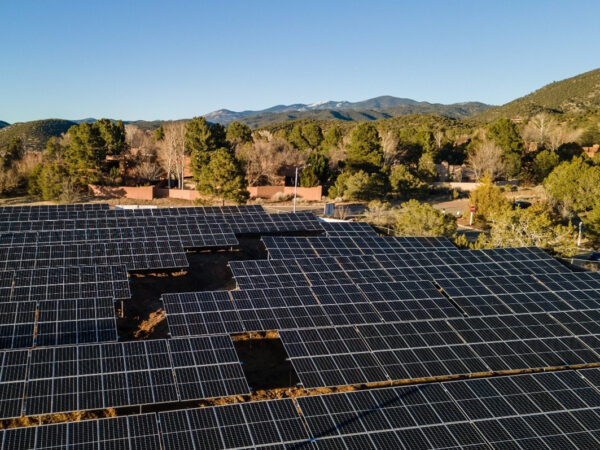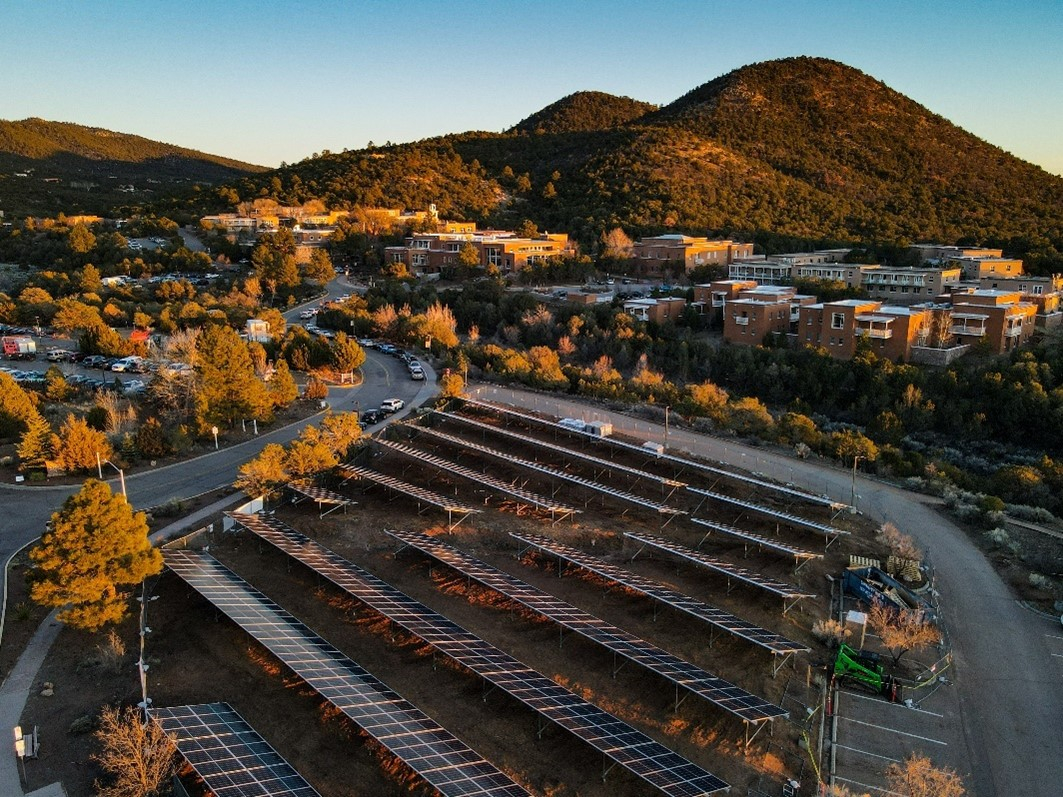St. John’s College in Santa Fe, New Mexico announced it has partnered with Ameresco to undergo a comprehensive solar and energy efficiency upgrade. The campus-wide project is expected to save the college over $100,000 annually.
The multi-phase renovation will include the installation of a 1,670-panel solar project, as well as 20 electric vehicle charging stations in four locations. The solar array will be grid connected, linking the college’s solar production to the local utility grid, enabling it to store and utilize power as needed.
To date, completed projects include interior and exterior LED lighting retrofits, re-roofing and HVAC retrofits, boiler and air handling unit replacements and water infrastructure upgrades.
The updates are expected to help the college reduce its carbon footprint by 858 metric tons, equivalent to the emissions of nearly 100,000 gallons of gasoline burned or the electricity demand of 167 homes.

Image: Ameresco
“Together, we’ve been able to identify areas of improvement that will have a long-lasting impact and help the college generate significant energy and cost savings, making room for funding allocations elsewhere,” said Bob Georgeoff, executive vice president, Ameresco.
The project was catalyzed by a senior gift from the college’s Class of 2019, which provided funding for an energy audit for the campus.
“The implementation of these sustainable solutions ensures that our campus facilities and student offerings fit the culture we’ve built our institution on,” said Mark Roosevelt, President of St. John’s College Santa Fe.
Solar schools
Colleges, universities, and schools across the nation are adopting solar and energy efficiency at accelerated rates. A report from Generation180 showed that solar on K-12 schools has tripled since 2015, and now 9% of schools source electricity from PV.
Energy is second only to teacher salaries when it comes to cost, according to NREL, and U.S. schools spend more than $6 billion a year on the line item. Solar presents an opportunity for schools to alleviate budget pressure, often at little or no upfront cost, freeing up funds for more educational benefits.
Schools often sign a power purchase agreement (PPA) when going solar, allowing the school to buy the electricity produced by the solar installation for 10-25 years at a discounted rate, serving up cost savings from day one.
The report found that 87% of schools enter third-party power purchase agreements, while the remainder own their systems. Nearly half (47%) of the public schools that have invested in solar are eligible for the Title 1 Schoolwide Program, which serves a large population of low-income students.
Across the nation, over 1.6 GW of solar capacity has been installed for schools, enough to power 300,000 homes annually.
Generation180 offers guidance for schools interested in solar in its Clean Energy School Leaders Network and providing educational resources and technical assistance.
This content is protected by copyright and may not be reused. If you want to cooperate with us and would like to reuse some of our content, please contact: editors@pv-magazine.com.









By submitting this form you agree to pv magazine using your data for the purposes of publishing your comment.
Your personal data will only be disclosed or otherwise transmitted to third parties for the purposes of spam filtering or if this is necessary for technical maintenance of the website. Any other transfer to third parties will not take place unless this is justified on the basis of applicable data protection regulations or if pv magazine is legally obliged to do so.
You may revoke this consent at any time with effect for the future, in which case your personal data will be deleted immediately. Otherwise, your data will be deleted if pv magazine has processed your request or the purpose of data storage is fulfilled.
Further information on data privacy can be found in our Data Protection Policy.